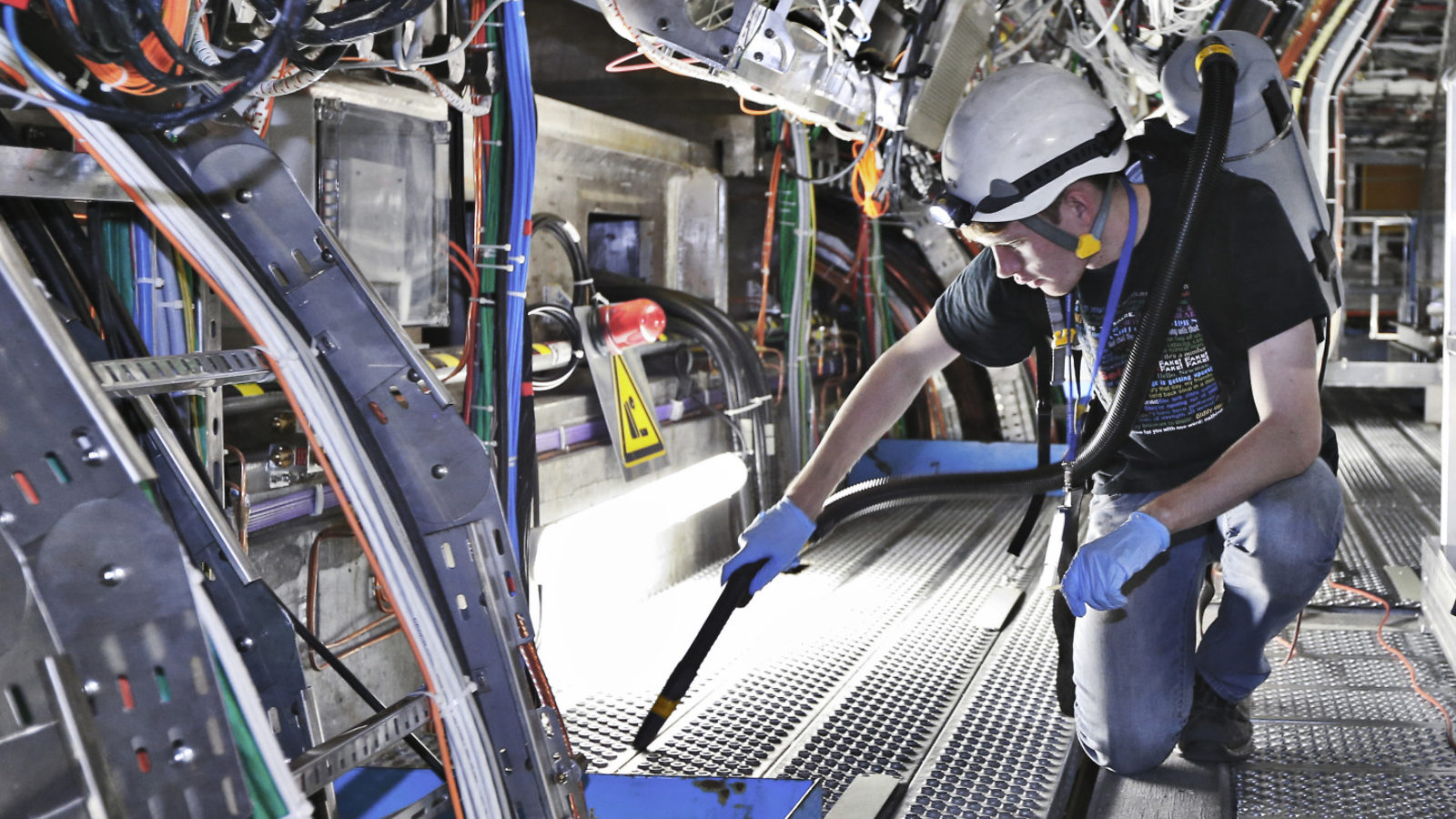No, they’re not Ghost Busters looking for paranormal activity. Nor are they the last human survivors of a zombie apocalypse living in a complex underground society.
The people crawling around the ATLAS detector at the Large Hadron Collider with packs on their backs are particle physicists armed with vacuum cleaners and trash bags. They're moving through a more-than-7000-ton particle detector the size of the Notre Dame Cathedral, giving it a final scrub-down before testing its powerful toroid magnet.
It sounds almost as weird as ghosts and zombies, but vacuuming the detector is actually a standard procedure for physicists working on the ATLAS experiment based at CERN.
Before turning on the ATLAS toroid magnet—which is theoretically powerful enough to lift a car clear off the ground—students, professors, and other ATLAS experimental staff did a final sweep for loose bolts, cable ties and other foreign objects in the experimental cavern.
“We wanted to make our detector look nice and clean before operation,” says University of Michigan physicist Steve Goldfarb, who took two four-hour shifts vacuuming the detector. “Also, it’s not good to have loose metal lying around when you’re about to turn on a few-Tesla electromagnet.”
The ATLAS experiment is one of two general-purpose detectors located on the Large Hadron Collider at CERN. Unlike its sister experiment, the dense and compact CMS detector, the ATLAS detector has an air core between its eight-story high muon chambers. This allows ATLAS physicists to track the paths of muons over a great distance.
However, it also means that extraneous stuff sometimes winds up in the detector’s cracks and crevices. And after two years of upgrades and repairs, the hundred-person cleaning team had their work cut out for them tracking down rogue washers and other detritus.
But cleaning a particle detector the size of an office building is much more fun than cleaning, say, one’s apartment, according to Goldfarb.
“Crawling around inside the ATLAS detector, all I could think is that every single piece of this massive detector had to be built, shipped, tested and installed by someone,” Goldfarb says. “It made me marvel at just how complex this project really is—not just because of the science and engineering, but the huge collaboration between people and nations that had to happen just to bring these all these individual parts together.”







